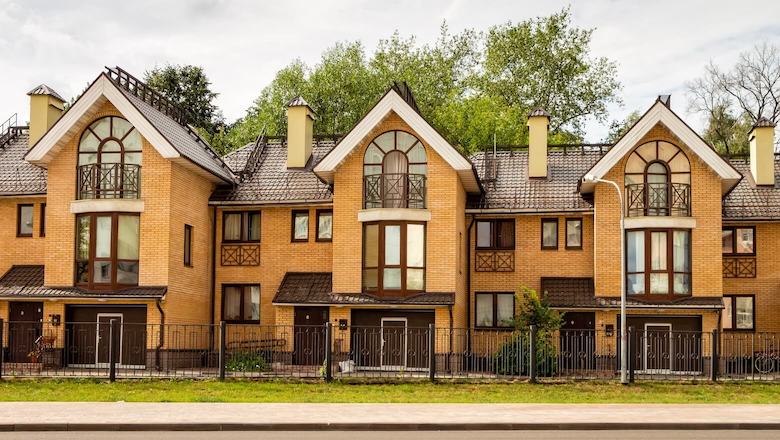What to Know About Government Home Loans
Conventional loans are the most popular kind of mortgage, but a government-backed mortgage like an FHA loan is easier to qualify for and may have a lower interest rate. FHA home loans have attractive qualities, but borrowers should know that mortgage insurance usually tags along for the life of the loan.
As of March 2023, new FHA borrowers will pay less for insurance. The Biden-Harris Administration announced it was reducing premiums by .30 percentage points, lowering annual homeowner costs by $800 on average. The administration hopes the cuts will help offset rising interest rates.
What Is an FHA Loan?
The Federal Housing Administration has been insuring mortgages originated by approved private lenders for single-family and multifamily properties, as well as residential care facilities, since 1934.
The FHA backs a variety of loans that cater to the specific needs of a borrower, such as FHA reverse mortgages for people 62 and older and FHA Energy Efficient Mortgages for those looking to finance home improvements that will increase energy efficiency (and therefore lower housing costs).
But FHA loans are most popular among first-time homebuyers, in large part because of the relaxed credit requirements.
Recommended: Tips to Qualify for a Mortgage
FHA Loan Requirements
If you’re interested in an FHA home loan to buy a single-family home or an owner-occupied property with up to four units, here are the details on qualifying.
FHA Loan Credit Scores and Down Payments
Borrowers with FICO® credit scores of 580 or more may qualify for a down payment of 3.5% of the sales price or the appraised value, whichever is less.
Those with a poor credit score range of 500 to 579 are required to put 10% down.
The FHA allows your entire down payment to be a gift, from a family member, close friend, employer or labor union, charity, or government homebuyer program. The money will need to be documented with a mortgage gift letter.
FHA Loan DTI
Besides your credit score, lenders will look at your debt-to-income ratio, or monthly debt payments compared with your monthly gross income.
FHA loans allow a DTI ratio of up to 50% in some cases, vs. a typical 45% maximum for a conventional loan.
FHA Mortgage Insurance
FHA loans require an upfront mortgage insurance premium (MIP) of 1.75% of the base loan amount, which can be rolled into the loan. As of March 2023, monthly MIP for new homebuyers is 0.15% to .75% — most often 0.55%.
For a $300,000 mortgage balance, that’s upfront MIP of $5,250 and monthly MIP of $137.50 at the 0.55% rate.
That reality can be painful, but MIP becomes less expensive each year as the loan balance is paid off.
There’s no getting around mortgage insurance with an FHA home loan, no matter the down payment. And it’s usually only shed by refinancing to a conventional loan or selling the house.
FHA Loan Limits
In 2023, FHA loan limits in most of the country are as follows:
• Single unit: $472,030
• Duplex: $604,400
• Three-unit property: $730,525
• Four-unit property: $$907,900
The range in high-cost areas is $1,089,300 (for single unit) to $2,095,200 (four-unit property); for Alaska, Hawaii, Guam, and the U.S. Virgin Islands, the range is $1,633,950 (for single unit) to $3,142,800 (for four-unit property).
FHA Interest Rates
FHA loans usually have lower rates than comparable conventional loans.
The annual percentage rate (APR) — the annual cost of a loan to a borrower, including fees — may look higher on paper than the APR for a conventional loan because FHA rate estimates include MIP, whereas conventional rate estimates assume 20% down and no private mortgage insurance.
The APR will be similar, though, for an FHA loan with 3.5% down and a 3% down conventional loan.
First-time homebuyers can
prequalify for a SoFi mortgage loan,
with as little as 3% down.
Questions? Call (888)-541-0398.
FHA Income Requirements
There are none. High and low earners may apply for an FHA loan, but they must have at least two established credit accounts.
Recommended: How to Afford a Down Payment on Your First Home
Types of FHA Home Loans
Purchase
That’s the kind of loan that has been described.
FHA Simple Refinance
By refinancing, FHA loan borrowers can get out of an adjustable-rate mortgage or lower their interest rate.
They must qualify by credit score and income, and have an appraisal of the property. Closing costs and prepaids can usually be rolled into the new loan.
FHA Streamline Refinance
Homeowners who have an FHA loan also may lower their interest rate or opt for a fixed-rate FHA loan with an FHA Streamline Refinance. Living up to the name, this program does not require a home appraisal or verification of income or credit.
Note: SoFi does not offer FHA streamline refinance, FHA 203(k) loan, or FHA cash-out refinance at this time. However, SoFi does offer FHA loan options.
The new loan may carry an MIP discount, but you’ll pay the upfront MIP in addition to monthly premiums. An exception: The upfront MIP fee of 1.75% is refundable if you refinance into an FHA Streamline Refinance or FHA Cash-out Refinance within three years of closing on your FHA home loan.
Closing costs are involved with almost any refinance, and the FHA doesn’t allow lenders to roll them into a Streamline Refinance loan. If you see a no closing cost refinance for an FHA loan, that means that instead of closing costs, a lender will charge a higher interest rate on the new loan.
You’ll continue to pay MIP after refinancing unless you convert your FHA loan to a conventional mortgage.
FHA Cash-Out Refinance
You don’t need to have an FHA loan to apply for an FHA Cash-Out Refinance. Whatever kind of loan the current mortgage is, if the eligible borrower has 20% equity in the home, the refinanced loan, with cash back, becomes an FHA loan.
The good news: Homeowners with lower credit scores may be approved. The not-great news: They will have to pay mortgage insurance for 11 years.
Any cash-out refi can trigger mortgage insurance until a borrower is back below the 80% equity threshold.
FHA 203(k) Loan
In addition to its straightforward home loan program, the FHA offers FHA 203(k) loans, which help buyers of older residences finance both the home purchase and repairs with one mortgage.
An FHA 203(k) loan can be a 15- or 30-year fixed-rate or adjustable-rate mortgage.
Some homeowners take out an additional home improvement loan when the need arises.
FHA vs Conventional Loans
Is an FHA loan right for you? If your credit score is between 500 and 620, an FHA home loan could be your only option. But if your credit score is 620 or above, you might look into a conventional loan with a low down payment.
You can also buy more house with a conventional conforming loan than with an FHA loan. Conforming loan limits in 2023 are $726,200 for a one-unit property and $1,089,300 in high-cost areas.
Borrowers who put less than 20% down on a conventional loan may have to pay private mortgage insurance (PMI) until they reach 20% loan-to-value. But borrowers with at least very good credit scores may be able to avoid PMI by using a piggyback mortgage; others, by opting for lender-paid mortgage insurance.
One perk of an FHA loan is that it’s an assumable mortgage. That can be a draw to a buyer in a market with rising rates.
The Takeaway
An FHA home loan can secure housing when it otherwise could be out of reach, and FHA loans are available for refinancing and special purposes. But mortgage insurance often endures for the life of an FHA loan. The Biden-Harris Administration recently reduced monthly MIP for new homebuyers to help offset higher interest rates.
Some mortgage hunters might be surprised to learn that they qualify for a conventional purchase loan with finite mortgage insurance instead. And some FHA loan holders who have gained equity may want to convert to a conventional loan through mortgage refinancing.
SoFi offers conventional fixed-rate mortgages with competitive interest rates and cancellable PMI, as well as refinancing. Check out SoFi’s low rate home mortgages.
Qualifying first-time homebuyers can put as little as 3% down, and others, 5%.
Photo credit: iStock/Ihor Lukianenko
SoFi Mortgages
Terms, conditions, and state restrictions apply. Not all products are available in all states. See SoFi.com/eligibility-criteria for more information.
SoFi Loan Products
SoFi loans are originated by SoFi Bank, N.A., NMLS #696891 (Member FDIC). For additional product-specific legal and licensing information, see SoFi.com/legal. Equal Housing Lender.
Financial Tips & Strategies: The tips provided on this website are of a general nature and do not take into account your specific objectives, financial situation, and needs. You should always consider their appropriateness given your own circumstances.
Third-Party Brand Mentions: No brands, products, or companies mentioned are affiliated with SoFi, nor do they endorse or sponsor this article. Third-party trademarks referenced herein are property of their respective owners.
SOHL0622007 Read more




